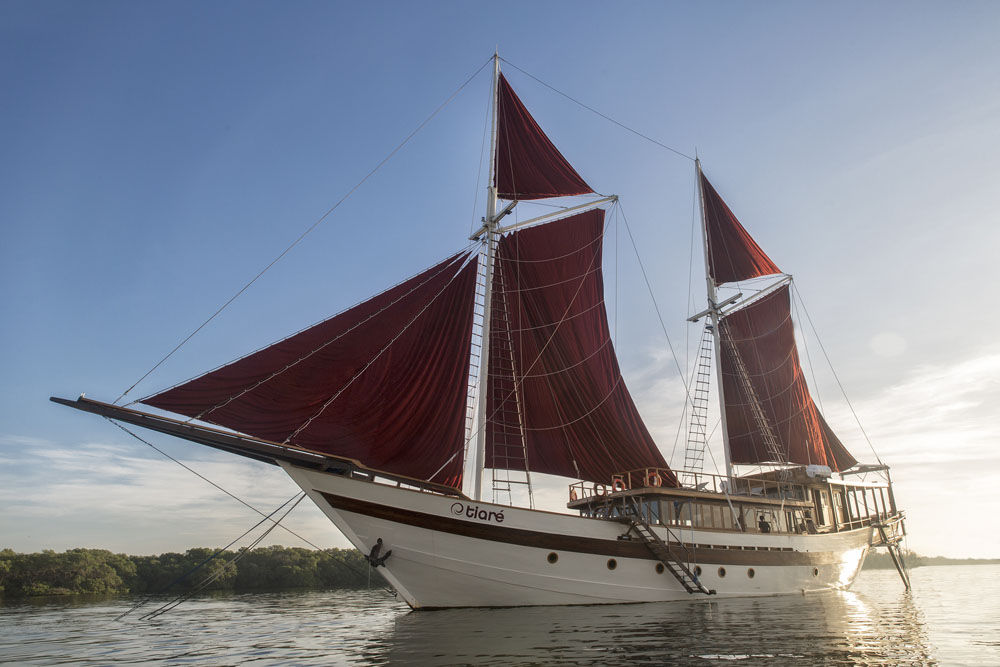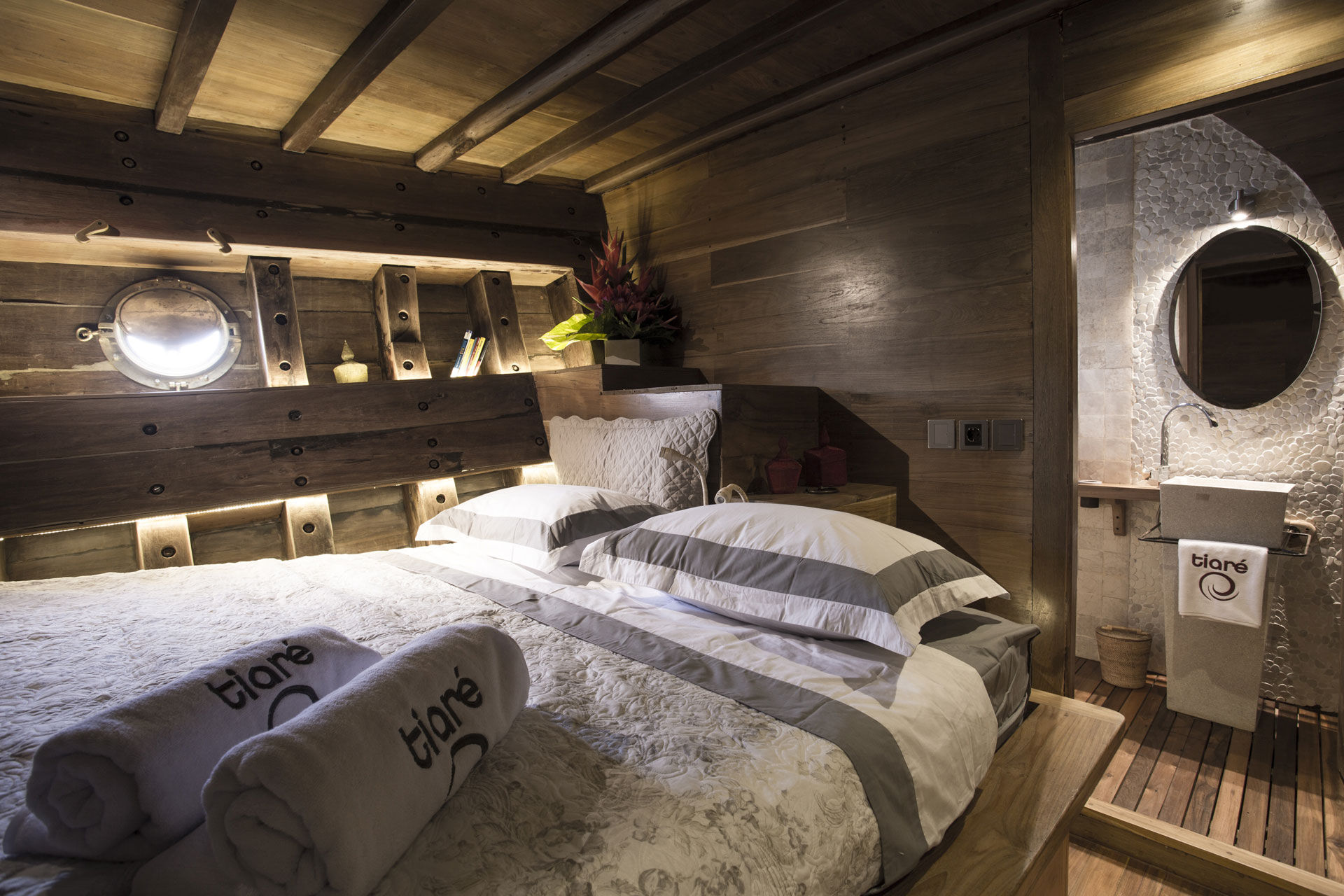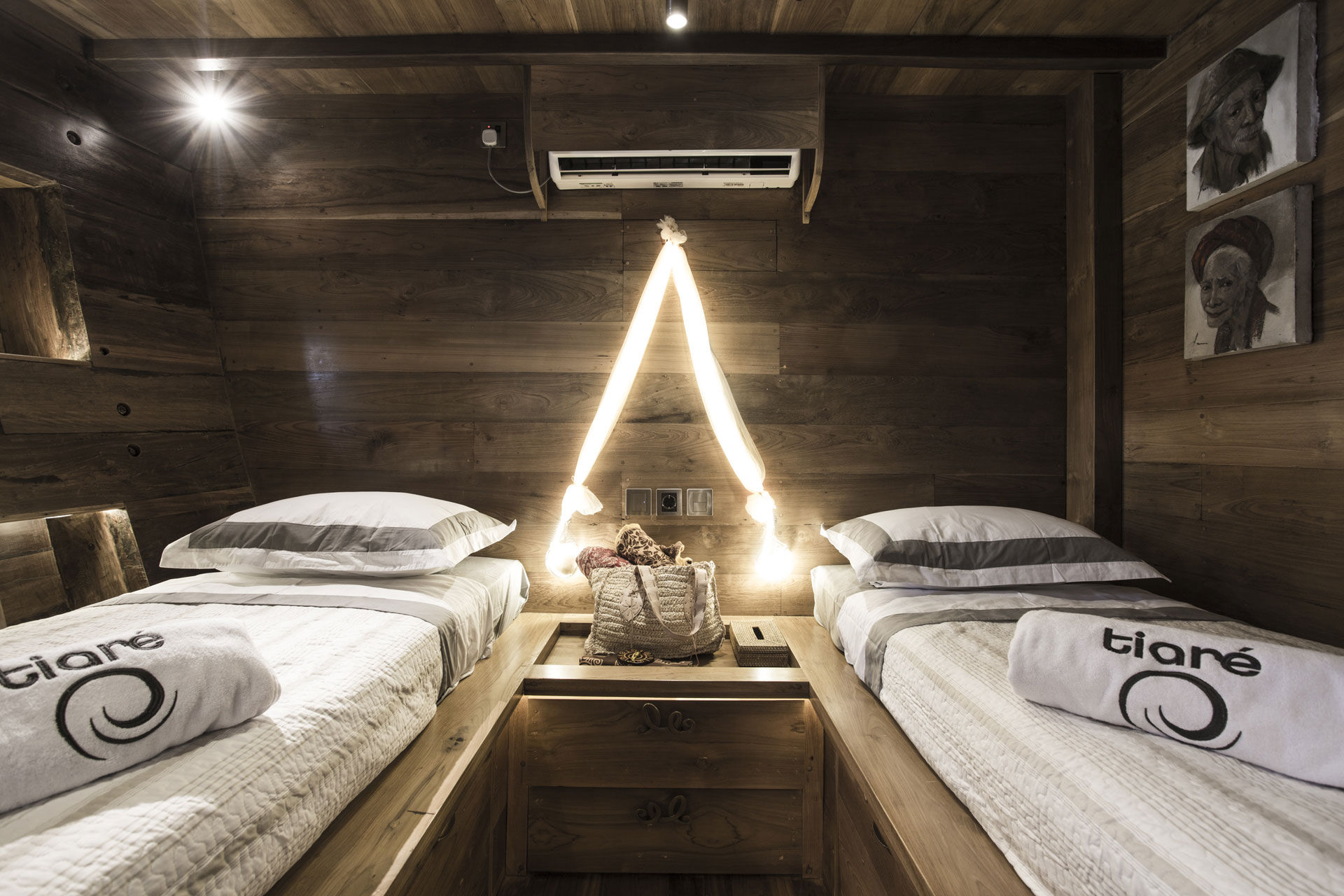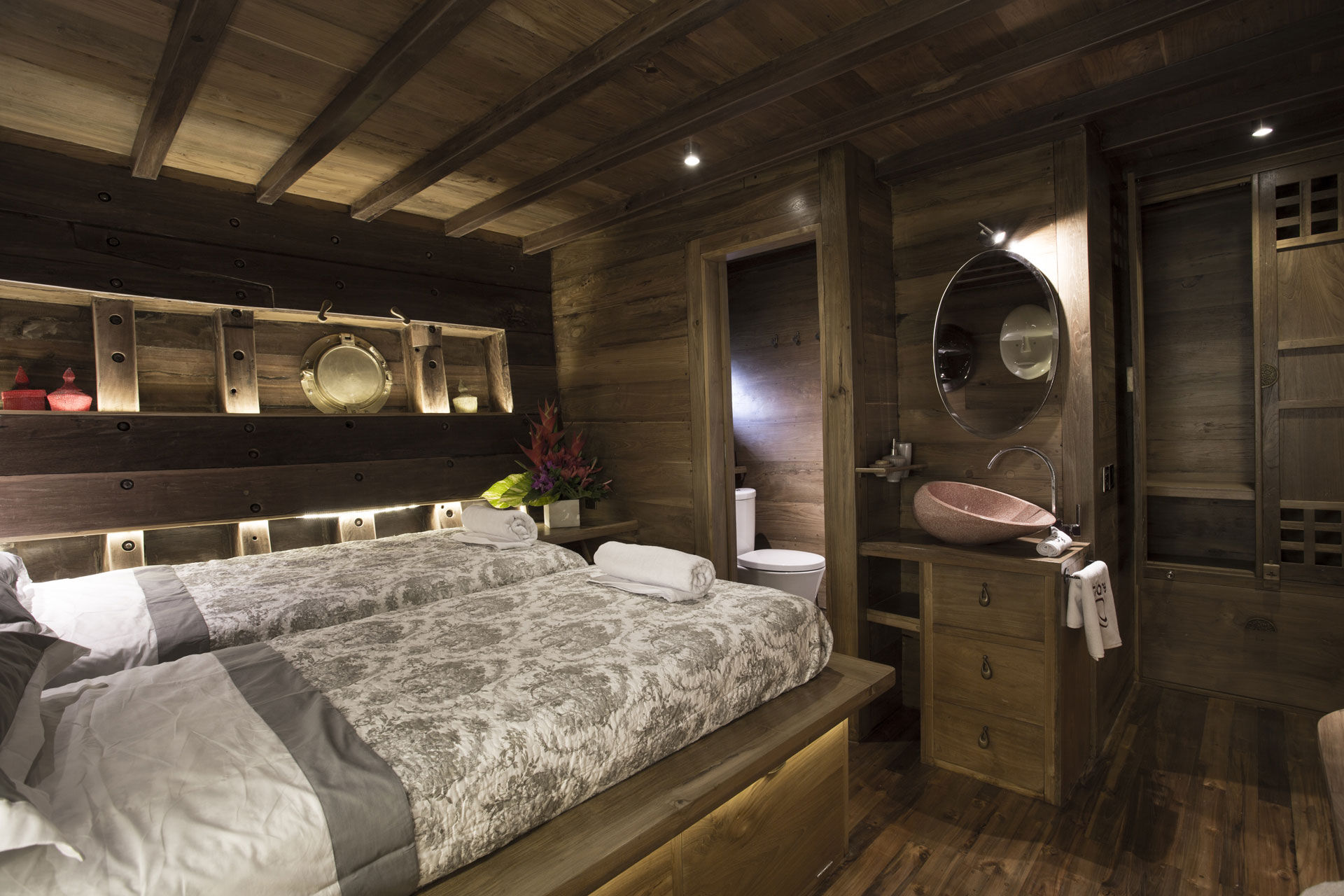日程安排
样本行程:
行程始于您抵达机场时,我们的工作人员将在那里欢迎您的到来。在您下船的当天,我们将送您回到机场,与您道别。
第1天: Maumere - 登船。检查潜水。
第2-10天: 我们每天提供3-4次潜水,包括一个夜潜,如果可能的话。在穿越时,每天只能安排2次潜水。
Adunara、Lembata、Pantar和Alor是位于弗洛雷斯岛(Flores)以东的偏远且未经破坏的岛屿。
它们可能是印度尼西亚最隐秘的潜水宝地。从不可思议的泥潜点到壮观的峭壁,水晶般清澈的水到黑色火山沙地,再到有成千上万珊瑚鱼的强水流。印度尼西亚政府最近同意保护该地区,以确保为迁徙鲸类动物提供安全的路线,这些动物将在迁徙到班达海(Banda Sea)深水区的觅食地点时穿越海峡。
潜水区域:
Adunara Island: 东弗洛雷斯岛有一些著名的潜水点,如Magic Log,此地大量存在带状鳗鱼和蛙形鱼。在这里可以发现非常罕见的刺鰺鬼(Rhinopias)和神奇章鱼(Wonderpus octopus)。在这个区域还有很多未开发的地域等待探索。
Lembata Island: 值得进行潜水探索。常见有圆鲹、神仙鱼和许多不同的鹦嘴鱼种类。海鸟羽扇生长着侏儒海马。在Lamalera周围的海域也可能带来鲸类动物惊喜。
Alor: 潜水点名字如“The Bullet”给出了Alor潜水的某些提示——强水流,有时强到需要您注意。但是请放心,我们的潜导了解如何根据团队的能力调整潜水。别忘了,我们还提供Enos发射器,以防您意外脱离团队的情况下用于定位!
由于水流的方向和强度变化频繁,您可能会在上午进行一次轻松的潜水,而在下午发现同一个地方像个洗衣机一样。Pantar和Alor之间的海峡如同一个巨大的喷气机,将北边的Flores Sea的水推到南边的Savus Sea。类似的条件只有在科莫多(Komodo)周围可以找到。
在Komodo,您的梦想可以成真。科莫多和Rinca是我们仍然能够在野外找到科莫多巨蜥的唯一地方。
这些小而褐色的火烧地岛屿被沙滩环绕,被国家公园清澈的海水拍打着,您甚至可以看到巨蜥在沙滩上巡游或在高高的岩石突出处观察着您。
在水面下,还有许多您可能从未见过的奇妙生物,比如哈比特虫(hobbit worm)或Rhynopia、瓢虫以及骨虾(skeleton shrimp)。
科莫多不仅以微距生物闻名,这里的鱼类和珊瑚也因富含矿物质的水体而异常丰富。看到美丽的远洋鱼类,如鲨鱼或蝠鲼(manta),不必感到惊讶。
水温并不总是温暖,事实上,有时会相当凉冷。海面也不总是平静的,水流有时会异常猛烈,但丰盛的远洋生物、丰富的小型生物和微距生物以及数不清的色彩加上多样性,使得这里的潜水非常传奇。
由于其地理位置,正好位于印度洋与北方Flores Sea之间,我们可以预期较强的水流。
潜水区域: Castle Rock、Crystal Rock、Karang Makassar(蝠鲼)、Cannibal Rock、The Cauldron、The Shot Gun、Cannibal Rock及超过40个潜水点。
第11天: 船上早餐后,是时候退房并告别Tiaré号了。从Labuan Bajo离开。
海洋生物: 珊瑚鱼、鬼鰺、神奇章鱼、圆鲹、神仙鱼、鹦嘴鱼、海鸟羽扇、侏儒海马、哈比特虫、瓢虫、骨虾、鱼类、鲨鱼、蝠鲼、小生物
本次行程的最后一次潜水将在倒数第二天的下午4点左右进行。建议潜水员在结束最后一次潜水后等待24小时方可飞行。
样本行程和地图仅供参考。具体路线和参观地点可能会根据当地的法规、客人的经验、天气和后勤变化而进行调整,并由船长全权决定。
 微信扫码添加人工客服
微信扫码添加人工客服



